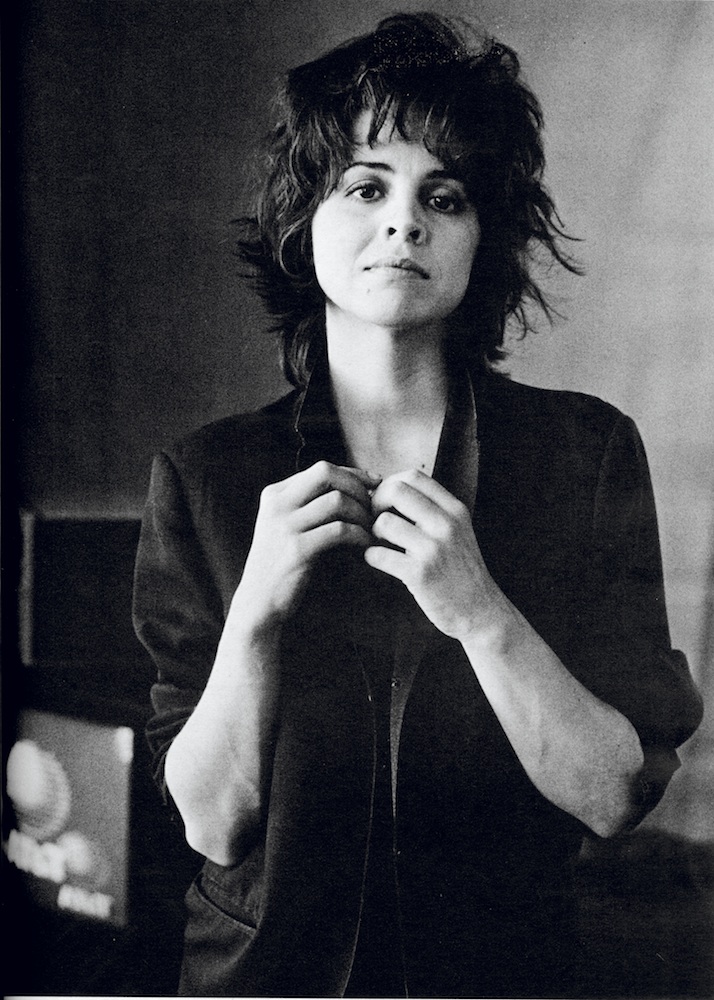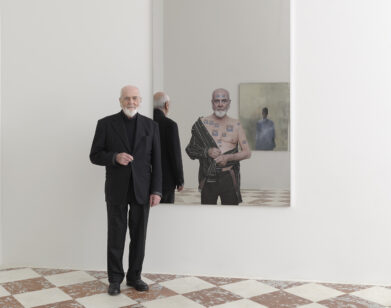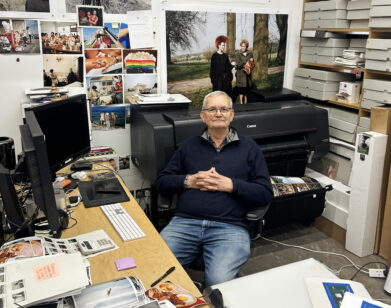Gretchen BENDER
The multimedia artist Gretchen Bender was speaking on a 1993 panel at SFMOMA when the accompanying slideshow—containing stills from her late-’80s exhibitions, which included broadcast television footage overlaid with the too-real phrases “sex panic,” “death squad budget,” or “people with AIDS”—malfunctioned. “I’m a real techno wizard,” she muttered wryly.
Compared to her contemporaries in the 1970s and ’80s Pictures Generation, most of whom sourced their images in print, Bender really was a techno wizard. A 1985 piece on her work in the pages of this magazine called her a “computer cowgirl” and quoted her as saying that “artists should be spending their money on VCRs instead of paint and canvas.” David Cronenberg, the speculative filmmaker, was probably her closest creative analogue. Her cacophonous, operatic, multiscreen installations, such as 1984’s Dumping Core and 1987’s Total Recall, mixed news footage with movie scenes and corporate logos with computer animations produced in collaboration with her friend Amber Denker, and were edited to feel fast and janky, like cocaine cut with speed. Yet the medium wasn’t her message, and Bender’s interest in television wasn’t technological, but material: TV was the best way to get her actual, main interest—the truths of powerful images, of corrupted images—into the stream. If she were working among the net and “post-net” artists of what we might call the Pics Generation today, she wouldn’t know how to code, but she would have morals—which is to say, she would still be exceptional.
This fall, several of Bender’s lesser-seen videos and silk screens are on view at Osmos Address, the East Village project space operated by the curator Cay Sophie Rabinowitz, who also runs the artist’s estate. Bender died in 2004 at age 53, and like so many difficult-to-pigeonhole women artists in middle age, she had seemingly all but vanished from the art world’s eye. “Bender recognized her political responsibility and the power that was located in broadcast media,” says Rabinowitz. “Her work is immersive, emotional, well-crafted and at the same time fleeting.”
“She wanted to circulate what she was seeing on CNN, MTV, and so on, and she wanted those images to circulate among a population that was already becoming desensitized to the news but wasn’t necessarily familiar with art,” says the artist and curator Philip Vanderhyden, who has been hugely instrumental in bringing back attention to Bender. In 2012, Vanderhyden brought Total Recall, among other works, to the Wisconsin alternative art space Poor Farm (Total Recall was also shown at the Kitchen in New York in 2013). And at the 2014 Whitney Biennial, he re-created from scratch People in Pain (1988), an assemblage comprising lacquer-black crumpled panels with the titles of then-upcoming films such as China Girl, Predator, and Fatal Attraction. Given Bender’s record of preferring immediacy in her work—and therefore obsolescence—to preservation, it’s strange to see her passions in the light of nostalgia. It’s also remarkable, given the rate at which technology has changed us, that two decades later her messages of frantic awareness, of what she called “underlying patterns of social control,” still sound so sharp.







